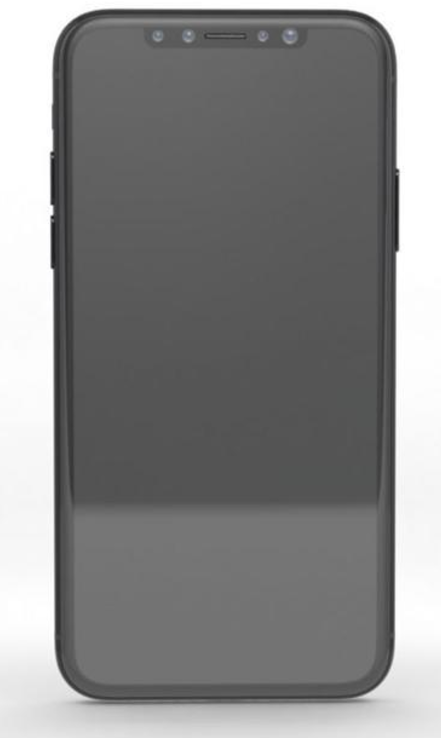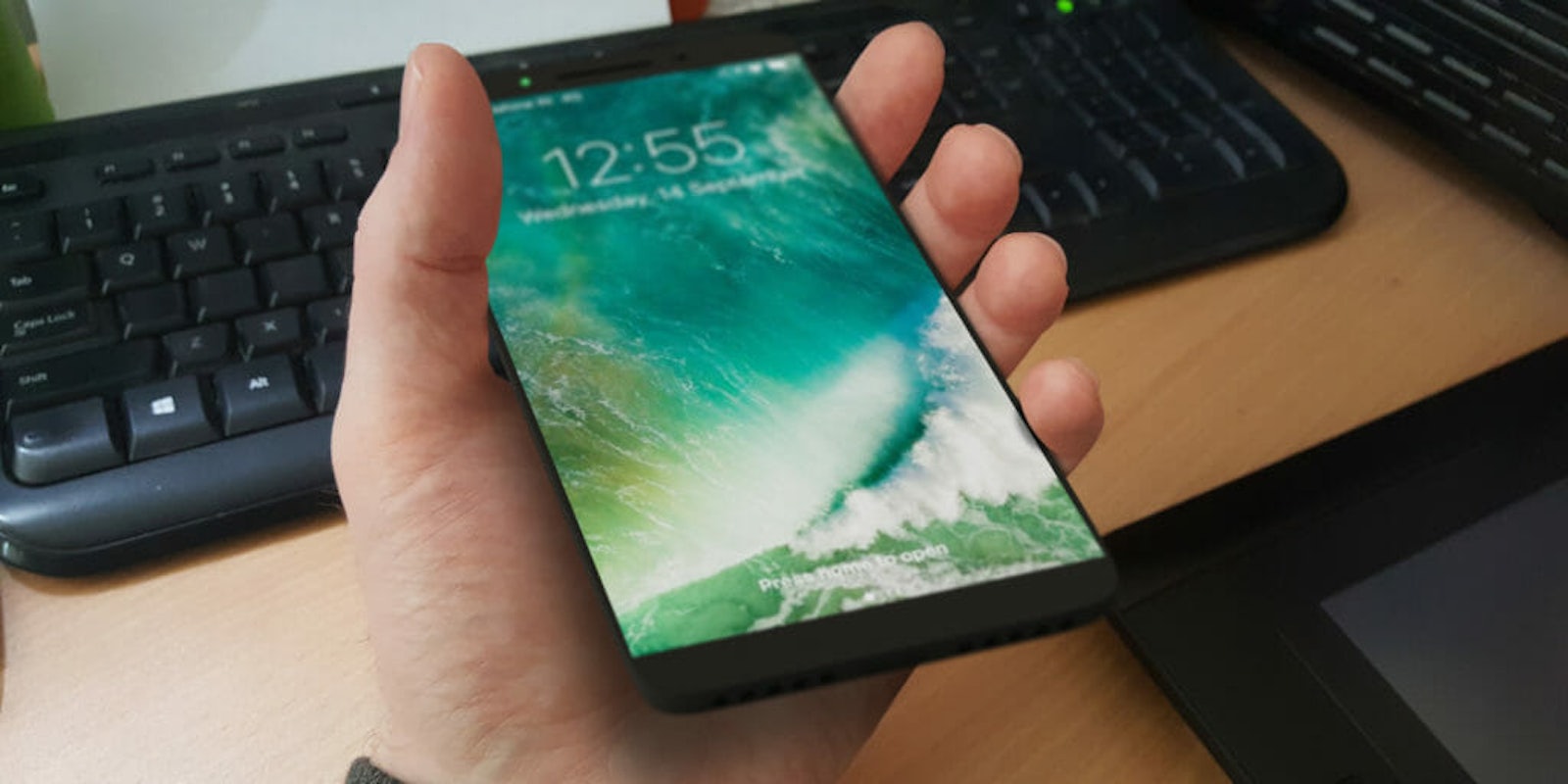Apple will unveil the most anticipated tech product of 2017 this September (or October): the iPhone 8. While many are wondering if the 10th anniversary of the original iPhone will motivate a dramatic redesign, the new iPhone 8 will likely be more about catching up to its competition than ushering in a smartphone revolution.
With tough competition from the Galaxy S8 and LG G6, Apple’s market dominance could hinge on the reception of the upcoming iPhone 8. Here’s what Apple needs to do to succeed.
1. Maximize the display
With its infinity display and practically non-existent bezels, the Samsung Galaxy S8 makes the iPhone 7 appear several generations behind. If Apple wants to keep up with its biggest competitor, it needs, at the very least, to trim down its large frame and fill the front of the device with Retina (or maybe OLED?) beauty. Fortunately, just about every render to date shows an iPhone 8 with a screen-to-body ratio that looks similar to that of its rivals. Forbes created some convincing renders of the new phone using CAD files obtained by smartphone accessory giant Nodus.
Here’s a look:

As you can see, Apple’s familiar home button is being retired. What will replace it is still a mystery, and something Apple can’t afford to get wrong if it wants to avoid the backlash the S8 received.
There’s a lingering fear that Apple will put its Touch ID fingerprint reader on the back of the phone instead of embedding it in the display. Others rumors claim an elongated side button could become the new home of the fingerprint sensor. I personally have no problem with either placement. As long as it’s easy to reach, works as well as previous Touch ID sensors, and isn’t categorically ugly, there shouldn’t be too many complaints.
https://twitter.com/hayander/status/888064172147322880
Stretching out the screen to the ends of the device will likely be enough to keep fans and critics happy. How Apple can get a leg up—and not just match the competition—is less clear. We haven’t seen a major redesign of the iPhone since the iPhone 5. Gone are the days of its standout designs and in its place are utilitarian devices that prioritize sensible, subtle changes over bold styling moves.
https://twitter.com/BersabehS/status/883053351746895873
This iPhone 8 render looks really good! pic.twitter.com/pvI2UoEl7X
— Gizmo (@DctrGizmo) July 24, 2017
If we don’t see a radical redesign of the iPhone that can rival the curved edge display of Samsung or the “melted glass” design of the stunning U11, the company’s best option might be to go the route of the Macbook—much lighter, much thinner.
2. Shot on iPhone 8
Google’s Pixel dethroned the iPhone from its long-running reign as the best camera phone. Since then, Samsung, LG, and HTC improved their offerings to compete with Pixel, while impressive entries from Chinese powerhouses OnePlus and Huawei aren’t far behind.
With iPhone 8 on the horizon, new leak sheds light on iPhone 9 https://t.co/UE37UB9ddf pic.twitter.com/VjLV7SporK
— Chris Smith (@chris_writes) July 6, 2017
The good news is the iPhone 7 isn’t trailing by much, and most people would agree that it’s got enough firepower to hold its own against the top shooters under most conditions.
It’s difficult to pinpoint what exactly the iPhone’s camera needs to improve, mostly because its performance varies shot to shot. But after looking for hours at A/B comparisons between the iPhone 7 and its competitors, photos taken in bright conditions could have improved color saturation and detail while autofocus performance could be improved in low light.
These small changes would go a long way to helping Apple regain its title. I’d also be nice to see the addition of manual controls to its camera interface, but I’m not holding my breath.
3. Bring back the jack
I can’t help but plead for Apple to bring back the headphone jack. Its removal was a move no one really asked for and even fewer people praised. Not even the well-regarded wireless AirPods helped.
What’s worse is that we never got a reason for its premature death. It’s not needed to make the phone waterproof, considering several other IP68-certified phones include a 3.5mm jack, which makes it seem like it was just a way to push $140 headphones.
Even still, the odds of Apple reviving the headphone jack are only slightly better than it bringing back the dreaded 30-pin connector—it’s just not going to happen. Apple rarely backtracks on its decisions, and the company isn’t going to admit fault for its prized product. A more likely scenario that could help the situation a bit is Apple bringing long-awaited wireless charging to the iPhone 8. That would at least let users charge their device while listening to wired headphones. It’s not a perfect solution, but it’s something.
4. Keeping it below four figures
Let’s get this out of the way: The iPhone 8 will be expensive—potentially even more than $1,000. Much of the price increase is being attributed to a rumored OLED display and potential 3D-sensing technology for iris and facial recognition verification methods. If the price holds true, consumers will have to ask themselves whether the iPhone 8 is worth several hundred more than the Galaxy S8 or twice as much as the excellent LG G6.
The $1,000 price point is actually not far off from the most expensive iPhone you can buy right now. A 256GB unlocked iPhone 7 Plus will run you $960 at most major carriers. Still, at more than $1,000, the iPhone would be a tough sell no matter how good the screen looks or cameras perform, unless Apple has some magical must-have software up its sleeve. At that price, the iPhone would put a lot of pressure on people’s wallets, and it would just as importantly put pressure on Apple to meet expectation.
Fortunately, there are rumors Apple will have a safety net in the form of two other iPhone models, perhaps an iPhone 7s and 7s Plus. This would at least give users a lower cost option at or around the price of its rivals. That price point is still restrictively expensive for a lot of people, but Apple does still sell the $400 iPhone SE.
Small tweaks, high stakes
The iPhone 7 was one of the best phones when it launched last year, and Apple only needs to make a few tweaks for its successor to reach those same heights. At the same time, substantial changes will need to be made if it wants to stand out in an increasingly competitive market. I think we can all agree that a new design is long overdue and will be needed if Apple plans to sell a $1,000 “10th anniversary” iPhone. That device will, at the very least, need to sport an edge-to-edge display and practical fingerprint sensor implementation.
In a way, the iPhone is like a Steven Spielberg release—you know it’s going to be a commercial and critical success, but you always wonder how far this one is going to move the bar compared to the last. I, for one, am hoping Apple’s iPhone 8 is more Raiders of the Lost Ark and less Kingdom of the Crystal Skull.


